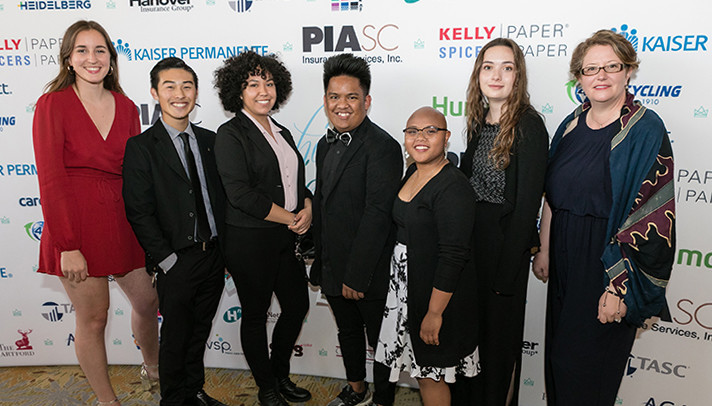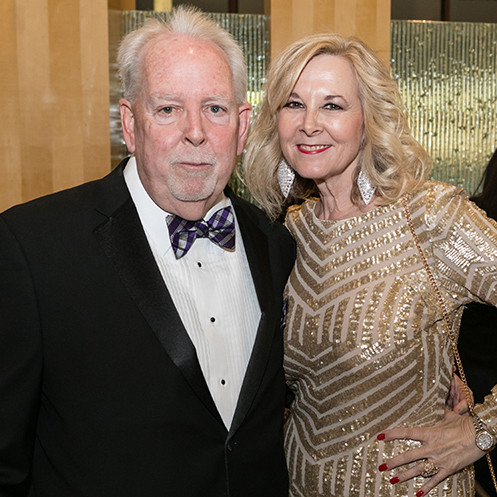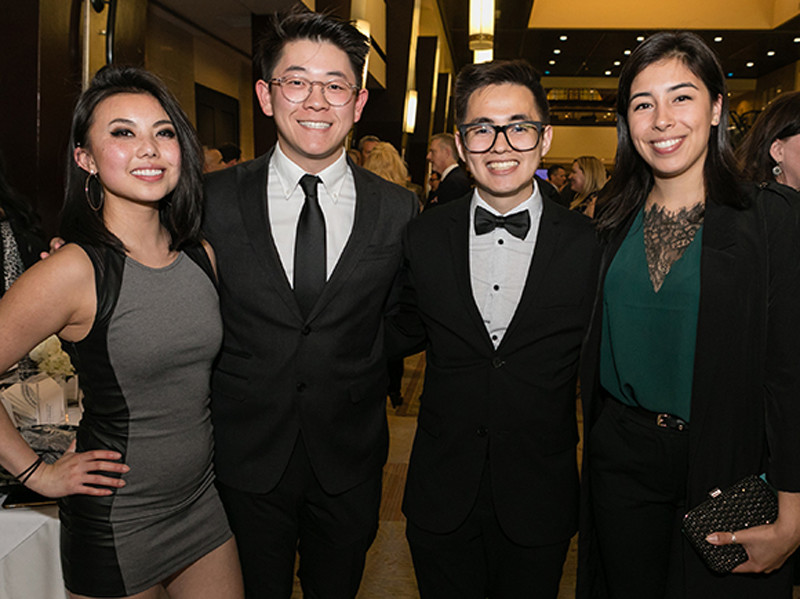
Graphics Night and Print Excellence, the yearly celebration of printing in Southern California, had some special people in attendance this year.
The Printing Industries Association, Inc. of Southern California (PIASC) has held this event for many years. In some cases, Graphics Night and Print Excellence were held as separate affairs. During Graphics Night, the association honors the Executive of the Year and during Print Excellence, the winners of our regional printing competition are announced.
First, as an audience member the past few years, I had no idea the amount of time and energy it took to put together this amazing event. Now, as President of the association, I have seen firsthand the hours and hours of prep and execution required to create this evening.
Besides the dedicated members of the PIASC staff, there are the highly knowledgeable judges who take time out of their busy schedules to help evaluate the printing samples that are submitted by our member companies. And, I can’t say enough about the Chair of the PIASC Public Relations Committee, Janet Green, President of Greens, Inc. Her dedication before and during the event is truly noteworthy.
2018 PIASC Executive of the Year
Second, I’d like to congratulate our 2018 PIASC Executive of the Year, Jack Stoughton. I truly appreciate a point that Jack made at the beginning of his acceptance speech. Before thanking his family and his team at Stoughton Printing for all their hard work and dedication, Jack reminded all of us that the future of this industry could be in jeopardy if we don’t make some needed changes. He challenged each one of us to go out and find a young person that can replace us in the industry. As Jack said, “We need more young people coming up and less of us “old farts” hanging around.”
We had a number of special people in attendance including Bryan Hall, Chair of PIA, and Michael Makin, CEO of PIA. In addition, we were honored to be joined by a number of printing and graphic communications students and instructors from local educational institutions including, Fullerton College, Riverside City College, Cal Poly Pomona and Cal Poly San Luis Obispo. The future of the industry is dependent on these students and others seeing the opportunities that await them in this industry.
The Future of the Printing Industry
An important point that we all need to understand is that it’s not just the printing industry that needs young people. Baby boomers in all industries are getting older and need to be replaced. Many young people look to high-tech as the jobs of the future. And the high-tech industry has responded. There’s a big push in the nation’s schools for S.T.E.M. classes. These are classes and educational projects that focus on Science, Technology, Engineering, and Math. The goal is to produce students that have the skills needed to be successful adults.
In an effort to prepare young people for the jobs of the future, one local community college offers classes fully integrated with the local machinist union. These classes include apprenticeship courses that lead to full employment. Another local college offers a similarly integrated program with air conditioning and heating courses. And these classes are well attended.
What is the printing industries’ response to educating and training young people? We have programs at institutions located in Riverside, Fullerton, Pomona and San Luis Obispo that tend to be focused on graphic arts. How can we get our young people interested in the art and science of printing? How can we support these institutions?
The best way to help these institutions is to fill them with students. These schools have the staff and equipment (in some cases old but functioning) to prepare the employees of the future. What they really need are students. And that’s our biggest obstacle. How can we help students, teachers, school administrators, counselors, and parents, appreciate that printing is a viable career? I believe that our Executive of the Year may have given us a clue as to how to accomplish this goal.
In his speech, Jack mentioned that he works with schools located close to Stoughton Printing. I know for a fact that Jack has opened his doors to students and their instructors to tour his facilities. And these students and their instructors were very impressed with what they saw. If each of us, working in our own neighborhood, could adopt a local high school, then maybe we can introduce young people to the industry, one school at a time.
Your local high school may not have a printing program but each high school in your neighborhood has an art class. And many of those classes are looking for ways to integrate technology (think STEM) into their curriculum. Imagine introducing these young people to “real life” applications of the computer programs that they are already familiar with.
Working together with a high school counselor and an art teacher at your local high school, a representative from your printing company can take projects completed at your facilities and show them to students. The rep can explain how Photoshop or Illustrator was used to design the pieces and that your state-of-the-art printing presses produced the pieces. These students would see the practical application of the lessons that had already been taught in their art class including Typography, Color Theory, and Principles of Design.
Once a relationship has been developed through the representative visiting the classroom, the next step would be to have the students visit your facility. When these young people see items they have seen in retail stores or have used in their own household including packaging or wide format or direct mail pieces, being produced in your facility, they will start to understand that printing is a viable career option.
Do you think this could be a way to introduce young people to careers in the printing industry? Can each one of us work with one school at a time to create the workforce of tomorrow? If so, perhaps Graphics Night next year will have even more students in attendance.
I’d be interested in hearing your ideas.



